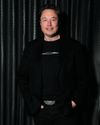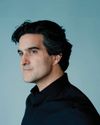
ON SEPT. 24, 2021, Intel broke ground on two new computer chip factories in Chandler, Ariz., just one of many such projects companies are racing to complete across the country to fuel a seemingly bottomless demand for semiconductors. Amid the backdrop of dirt, steel, and bulldozers, Intel CEO Pat Gelsinger stood at a podium to address the crowd gathered to mark the occasion. "Isn't this awesome?" he said, gesturing to the massive construction site behind him. "If this doesn't get you excited, check your pulse." Intel's plans for its campus near Phoenix are indeed remarkable: The chip giant is pouring $20 billion into the project, and says the new factories, or fabs, will create thousands of jobs, not to mention significantly boost its domestic capacity to churn out semiconductors used in products like personal computers and data center servers. But there's another, less celebratory side to the recent boom in chip manufacturing-not just Intel's, and not just in Arizona. Critics worry that the new plants could exacerbate the growing climate crisis, spoil the environment with chemicals, and suck aquifers dry. Here's why: While semiconductor chips are made in "clean rooms," manufacturing them is in fact quite dirty.
Producing the fingernail-size building blocks of electronics is an intricate and energy-intensive process. To that end, large fabs can use as much as 100 megawatthours of power hourly, more than what oil refineries or automotive plants consume, according to energy management provider Schneider Electric. Each semiconductor factory can also consume more than 1 million gallons of water daily, in addition to producing thousands of tons of chemical waste annually.
Bu hikaye Fortune US dergisinin February - March 2024 sayısından alınmıştır.
Start your 7-day Magzter GOLD free trial to access thousands of curated premium stories, and 9,000+ magazines and newspapers.
Already a subscriber ? Giriş Yap
Bu hikaye Fortune US dergisinin February - March 2024 sayısından alınmıştır.
Start your 7-day Magzter GOLD free trial to access thousands of curated premium stories, and 9,000+ magazines and newspapers.
Already a subscriber? Giriş Yap

THE NEW GOLD RUSH
Gold prices have soared amid global uncertainty and a central-bank-driven buying spree. But this time, the gold mining industry looks very different.

A New Season for Giving
As the PGA TOUR kicks off its 2025 season alongside its sponsors in Hawai'i, the organization is continuing to make an impact in local communities.

WELCOME TO ELONTOWN, USA
The small town of Bastrop, Texas (pop. 12,000), has become a home base for Elon Musk's business empire. What comes next is anyone's guess.

100 MOST POWERFUL PEOPLE
Our inaugural, authoritative ranking of the leaders whose innovation and impact have elevated them to the top of the business world.

ARE CEO SABBATICALS THE ULTIMATE POWER MOVE?
WHEN VENTURE capitalist Jeremy Liew and his wife were dating, they talked about how one day they would take a year to travel the world. \"That's how we'd know we'd made it,\" Liew says.

WHAT ARE THE BEST METRICS FOR MEASURING A STARTUP'S POTENTIAL?
IN HIS 2012 ESSAY \"Startup = Growth,\" Paul Graham talks about a 5% to 7% weekly growth rate as table stakes for startup success. If you're growing 10%, he says, you're doing \"exceptionally well.\"

TECH POLYMARKET'S ELECTION ACCURACY MADE SHAYNE COPLAN A STAR-BUT AN FBI RAID POINTS TO TROUBLE AHEAD
IN NOVEMBER, Shayne Coplan had a week he'll remember for the rest of his life: He got a phone call from the highest echelons at Mar-a-Lago. He went on TV for the first time. And his New York City apartment was raided by the FBI.

WHY BIG TECH IS THE NUCLEAR INDUSTRY'S NEW BEST FRIEND
OVER THE PAST several years, Big Tech firms like Google and Microsoft have trumpeted ambitious plans to go carbon-neutral, or even carbon-negative, by 2030. But then the generative-AI boom came along and threw a giant wrench in their plans.

WHAT PALMER LUCKEY, THE MAN REVOLUTIONIZING WARFARE, IS AFRAID OF
PALMER LUCKEY, the founder of the $14 billion Al-powered weapons startup Anduril, has become the face of change in the defense industry.

GLOBAL BUSINESS BRACES FOR TRUMP 2.0
AROUND THE WORLD in 2024, voters chose change: in South Africa, France, Britain, and Japan. But nowhere does the anti-incumbent trend matter more than in the United States.